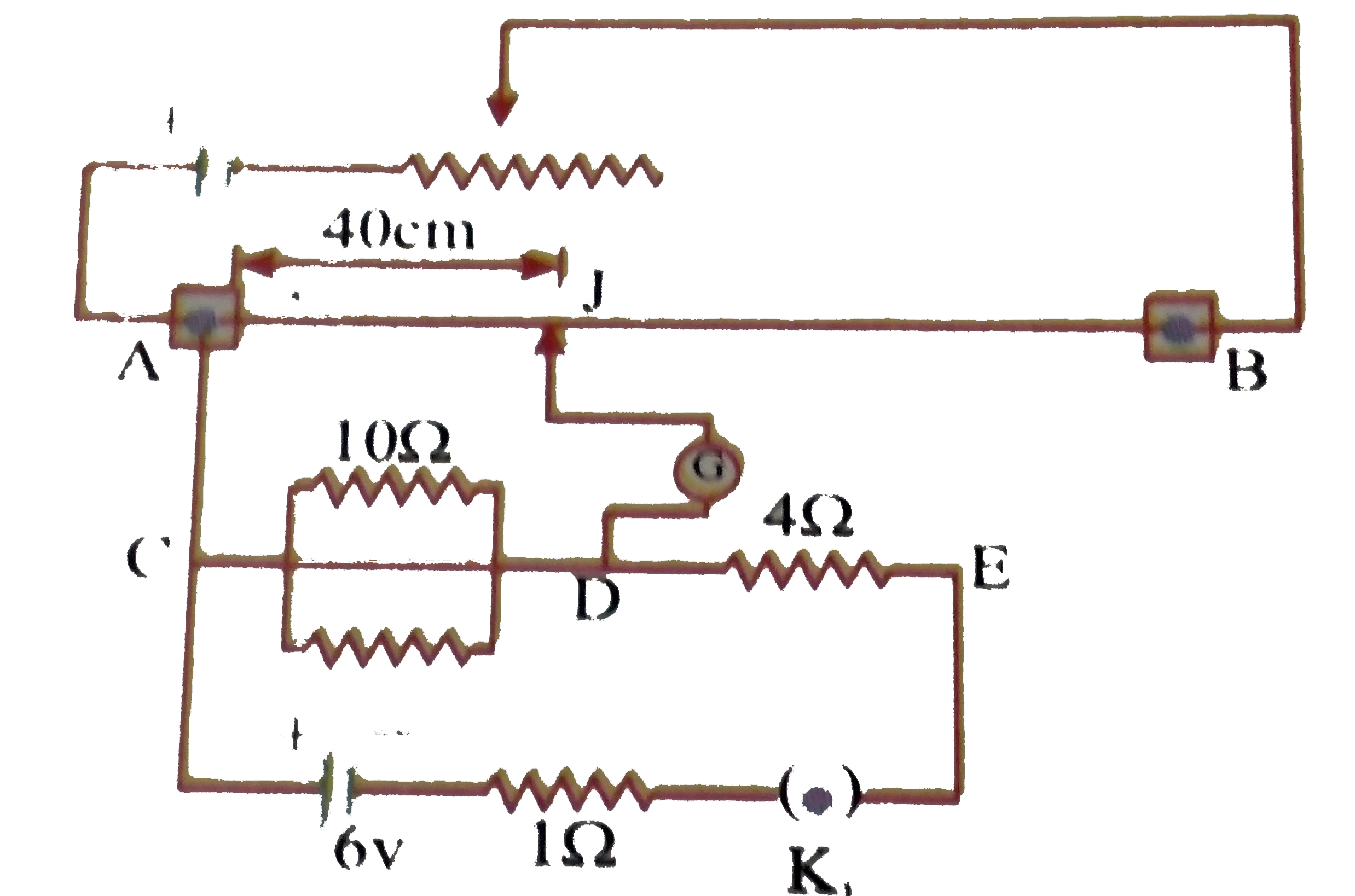There is a definite potential difference between the two ends of a potentiometer. Two cells are connected in such a way that first time help each other, and second time they oppose each other. They are balanced on the potentiometer wire at 120cm and 60cm length respectively. compare the electromotive force of the cells. potentiometer wire at 120cm and 60cm length respectively. Compare the electromotive force of the cells.
Suppose the potential gradient along the potentiometer wire=x
and the emf's of the two cells are E1 and E2.
When the cells help each other, the resultant emf=(E1+E2)
E1+E2=x×120cm.
When the cells oppose each other, the resultant emf=(E1−E2)
E1−E2=x×60cm.
From equation (i) and (ii)
E1+E2E1−E2=120cm60cm=21 or E1+E2=2(E1−E2) or 3E2=E1 or E1E2=31
Topper's Solved these Questions
Similar Questions
A cell is balanced at 100cm of a potentiometer wire when the total length of the wire is 400cm .If the length of the potentiometer wire is increased by 100cm ,then the new balancing length for the cell will be
View SolutionWith a certain cell the balance point is obtained at 70cm from the zero and of the potentiometer wire. With another cell whose emf differs from the 60cm mark .Calculate the emf of the two cells
View Solution
Knowledge Check
- Question 1 - Select One
A potentiometer has uniform potential gradient across it. Two cells connected in series (i) to support each other and (ii) to oppose each other are balanced over 6 m and 2 m respectively on the potentiometer wire. The e.m.f.’s of the cells are in the ratio of
A1:2B1:1C3:1D2:1 - Question 2 - Select One
The balancing lengths on a potentiometer wire are 800cm and 600cm when two cells of emfs E1 and E2 are connected in the secondary circuit first to help each other and next to oppose each other, then E1E2=
A1/11B14/11C7/1D4/3 - Question 3 - Select One
A potentiometer wire is 100cm long hand a constant potential difference is maintained across it. Two cells are connected in series first to support one another and then in opposite direction. The balance points are obtained at 50cm and 10cm from the positive end of the wire in the two cases. The ratio of emf is:
A3:2B5:1C5:4D3:4
The length of a potentiometer wire is 10m .The difference between the null points on its wire corresponding of two cells comes out to 60cm .If the difference of emf's of the cell is 0.6V then the potential gradient on potentiometer wire will be
View SolutionA 2 volt battery, a 15Ω resistor and a potentiometer of 100cm length, all are connected in series. If the resistance resistance of potentiometer wire is 5Ω, then the potential gradient of the potentiometer wire is
View SolutionA potentiometer wire is 10 m long and a P.D. of 6 V is maintained between its ends. The e.m.f. of the cell which balances against a length of 200 cm of the potentiometer wire is
View SolutionIn the given figure, battery E is balanced on 55 cm length of potentiometer wire but when a resistance of 10Ω is connected in parallel with the battery then it balances on 50 cm length of the potentiometer wire then internal resistance r of the battery is
 View Solution
View Solution
In the circuit shown in fig. the potential difference between the points C and D is balanced against 40 cm length of potentiometer wire of total length 100 cm. In order to balance the potential difference between the points D and E The jockey to be pressed on potentiometer wire at a distance ofView Solution
